ASM Metals HandBook Vol. 14 - Forming and Forging
Подождите немного. Документ загружается.

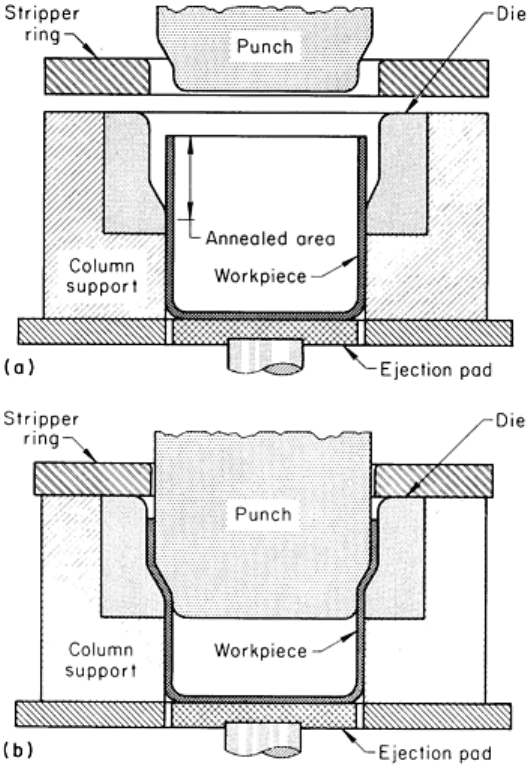
Expanding Drawn Workpieces
There are several methods for expanding portions of drawn workpieces in a press. Because the wall thickness is reduced
during expansion, it is not advisable to increase the diameter for ductile metal shells (such as low-carbon steel or copper)
more than 30%. If a diameter increase of more than 30% is required, the operation should be done in two or more stages,
with annealing between stages.
Expanding With a Punch. In expanding with a punch, as in Fig. 18, the portion to be expanded is first annealed.
Localized annealing, instead of annealing the entire cup, helps retain strength in the remainder of the cup. Regardless of
whether or not the strength is required in the finished part, maximum column strength is desirable to prevent buckling as
the punch enters the cup.
Fig. 18 Expansion of the mouth of a drawn shell with a punch.
After the cup has been placed in the die (Fig. 18a), the punch moves downward and expands the top of the cup (Fig. 18b).
During the return stroke, the workpiece is stripped from the punch by the stripper ring and is ejected from the die by the
ejection pad.
In an expanding operation of this kind, die dimensions are predetermined within reasonably close limits during the design
stage. However, the possibility of later design changes must always be considered. Depending on the shape and location
of the expanded section, a height reduction of the cup may occur that will require some modification of the die and punch
after tryout.
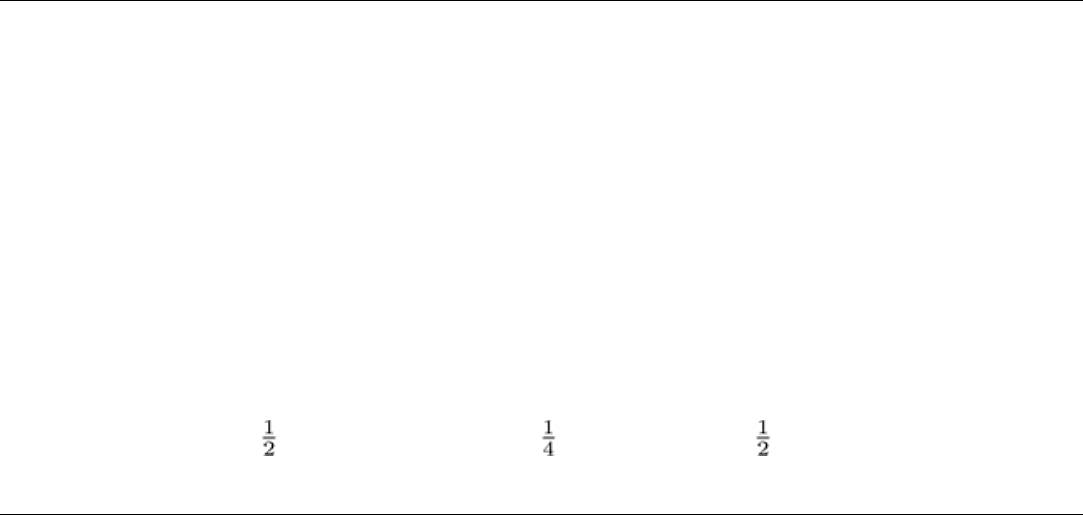
Expanding with segmented dies is often used for forming sidewalls of drawn shells or sections of tubing. The
forming segments are contracted by compression springs and expanded radially by a tapered punch. The die is made of
two or more segments held apart by compression springs. As the press ram descends, cams move the die segments
together. The punch then moves the inner segments outward, thus forming the contours in the sidewall. The presence of
gaps between the forming segments is one of the disadvantages of this method and is the reason an alternative method,
such as rubber-pad forming, is sometimes selected.
Deep Drawing
Deep Drawing of Pressure Vessels
Various grades of steel--many of them high-strength alloys--are deep drawn to make cylinders for compressed gases.
Joints (when they are made) are around the girth of the vessel, rather than longitudinal. The integrity of the vessel is
critical. Commercial-quality hot-rolled steels in the as-rolled condition are generally used. The work metal is usually
induction heated or induction annealed to minimize scale.
For propane gas, pressure tanks must have high strength at minimum weight. In one application, the weight of such a tank
was reduced from 59 to 32 kg (130 to 70 lb) by changing from 1025 steel to a high-manganese deep-drawing steel (Fe-
0.2C-1.6Mn-0.025P-0.3S). Before drawing, the high-manganese steel had a minimum yield strength of 345 MPa (50 ksi)
and a minimum tensile strength of 483 MPa (70 ksi).
Bottles for dispensing small quantities of liquefied gases or gases under high pressure are commonly made of drawing
quality low-carbon steel to take advantage of the improved mechanical properties produced by deep drawing. The bottles
range in size from 12.7 mm ( in.) in diameter by 32 mm (1 in.) long to 38 mm (1 in.) in diameter by 152 mm (6 in.)
long.
Deep Drawing
Deep Drawing Using Fluid-Forming Presses
Fluid forming (also termed hydroforming) is a deep drawing process that uses only one solid die half. Forming pressure is
applied by the action of hydraulic fluid against a flexible membrane, which forces the blank to assume the shape of the
rigid tool.
Fluid forming can be used for deep drawing and in fact offers advantages over other forming methods. One of these is
that the draw radius can be varied by changing the pressure of the hydraulic fluid during the forming operation. This
makes it possible to have, for example, a large draw radius at the start of the operation that decreases as the draw
continues. Thus, reductions of up to 70% in a single pass are possible when drawing cylindrical cups; for rectangular
shaped parts, a height of six to eight times the corner radius can be obtained in a single operation.
Presses for fluid forming sometimes use a telescoping ram system. Figure 19 shows a schematic of one type of press used
for fluid forming. Figure 20 illustrates the deep drawing process on a press of this type. More information on fluid-
forming equipment and processes is available in the article "Rubber-Pad Forming" in this Volume.
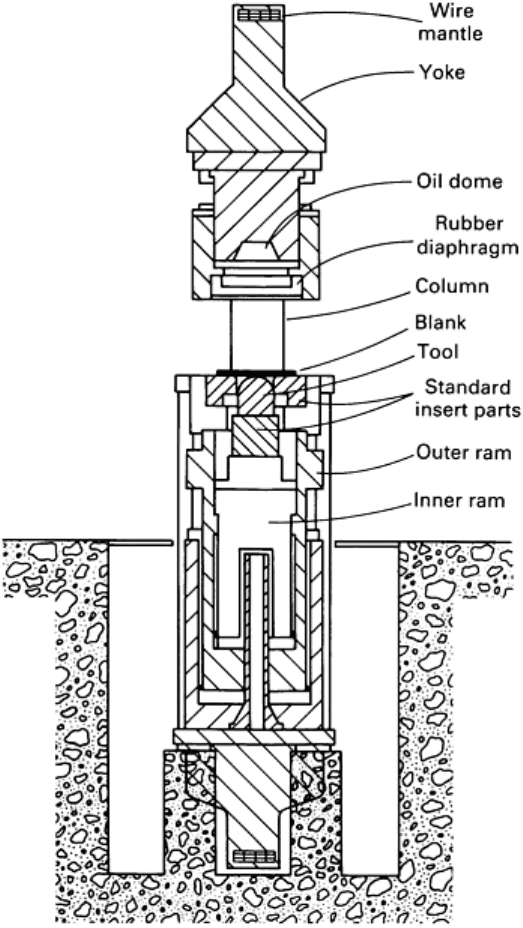
Fig. 19 Schematic of one type of fluid-forming press used for deep drawing.

Fig. 20 Deep-drawing process using the fluid-forming press shown in Fig. 19
. (a) The blank is placed on the
blankholder. (b) The outer ram moves upward, carrying the blank. (c) Oil is pumped into the
inner ram system,
pressing the punch upward. (d) Outer ram is returned to its initial position, and the punch is retracted to allow
removal of the formed part.
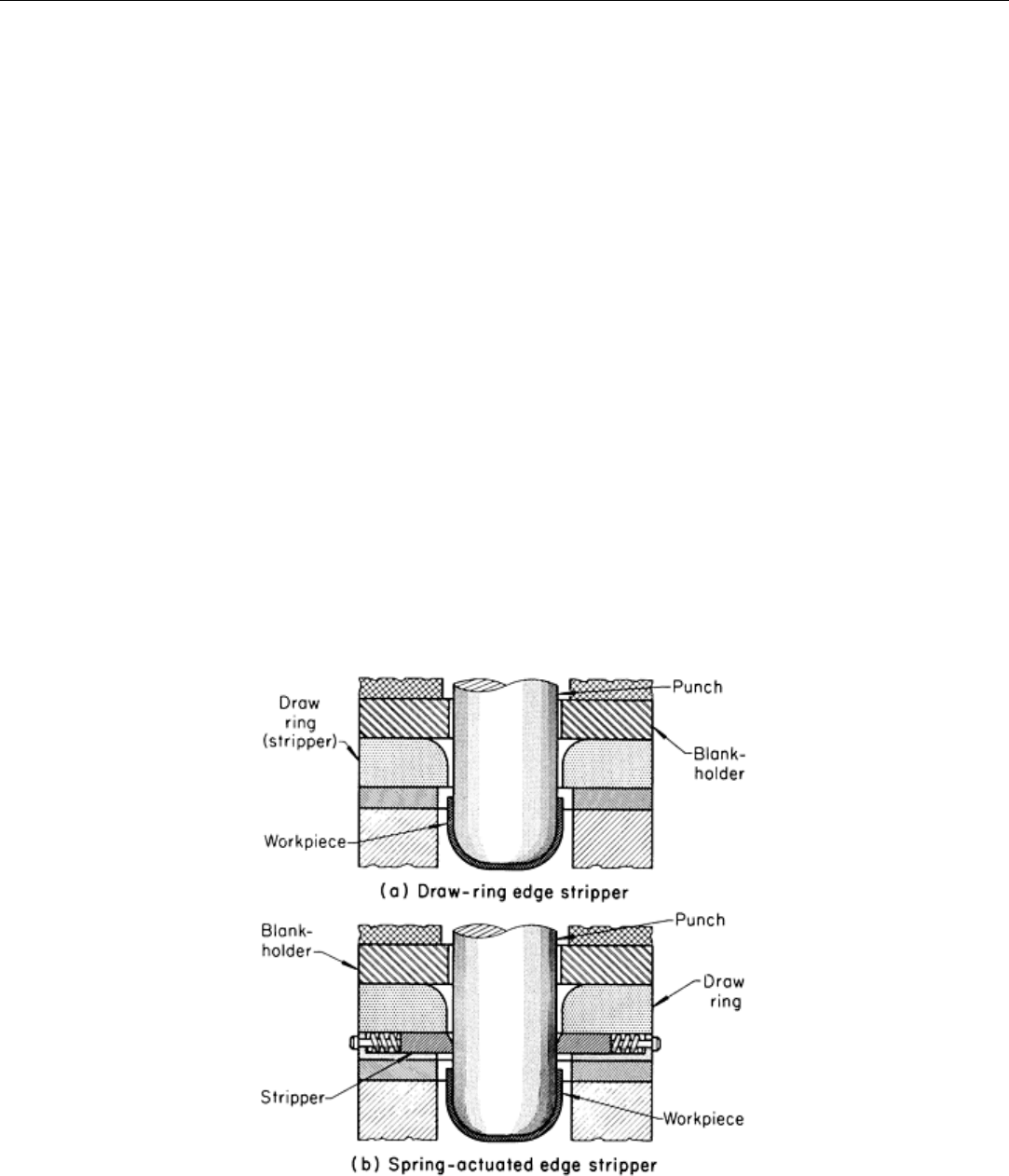
Deep Drawing
Ejection of Workpieces
In drawing operations, the drawn workpiece may adhere to either the punch or the die. Adherence is increased by depth of
draw, straightness of workpiece walls, and viscosity of lubricant. The simplest means of ejecting a small workpiece is by
compressed air through jets in the punch or the die. Timed air blast is widely used for ejecting relatively small
workpieces--for example, where cup diameter is no greater than 102 to 127 mm (4 to 5 in.). In some production drawing
operations, the workpiece is ejected by compressed air, and another timed blast of air from the side removes the piece by
sending it down a chute or into a container. However, for larger workpieces or for those that are deep, some other means
of ejection is required.
Mechanical methods of ejection include:
• Edge stripping by means of a lip on the draw ring (Fig. 21a) or by a spring-actuated stripper (Fig. 21b)
• The use of a blankholder in combination with an upper ejector (Fig. 22)
• The use of a lower ejector in combination with an upper stripper ring (Fig. 23)
Numerous other mechanical methods using cams or links have been devised to meet specific requirements. These
methods are usually modifications of those described above. For example, thin shells are sometimes stripped from
punches near the top of the press stroke by a cam-actuated rod that extends through the punch. This method is often used
to avoid damage to the open end of the shell, which can occur when the piece is ejected by other methods. The major
factors influencing the method of ejection are workpiece design (especially the presence or absence of a flange), work
metal composition and thickness, and the type of equipment available.
Fig. 21
Setups showing two methods of ejecting a drawn workpiece through the bottom of the press by edge
stripping.
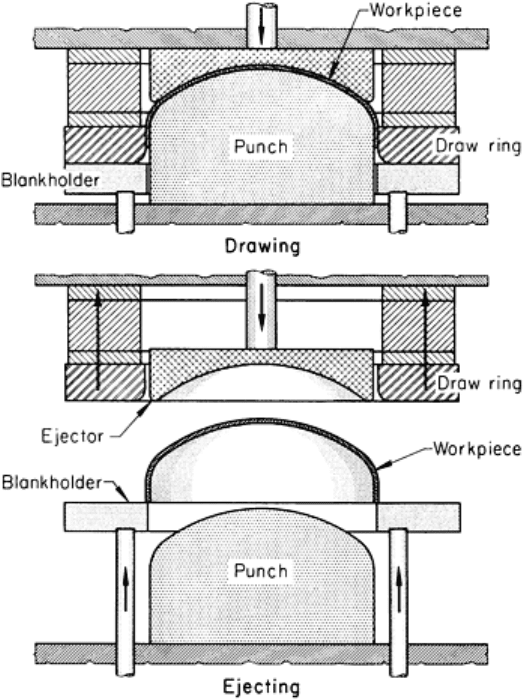
Fig. 22 Use of a blankholder and ejector for stripping of a drawn workpiece from inverted dies.
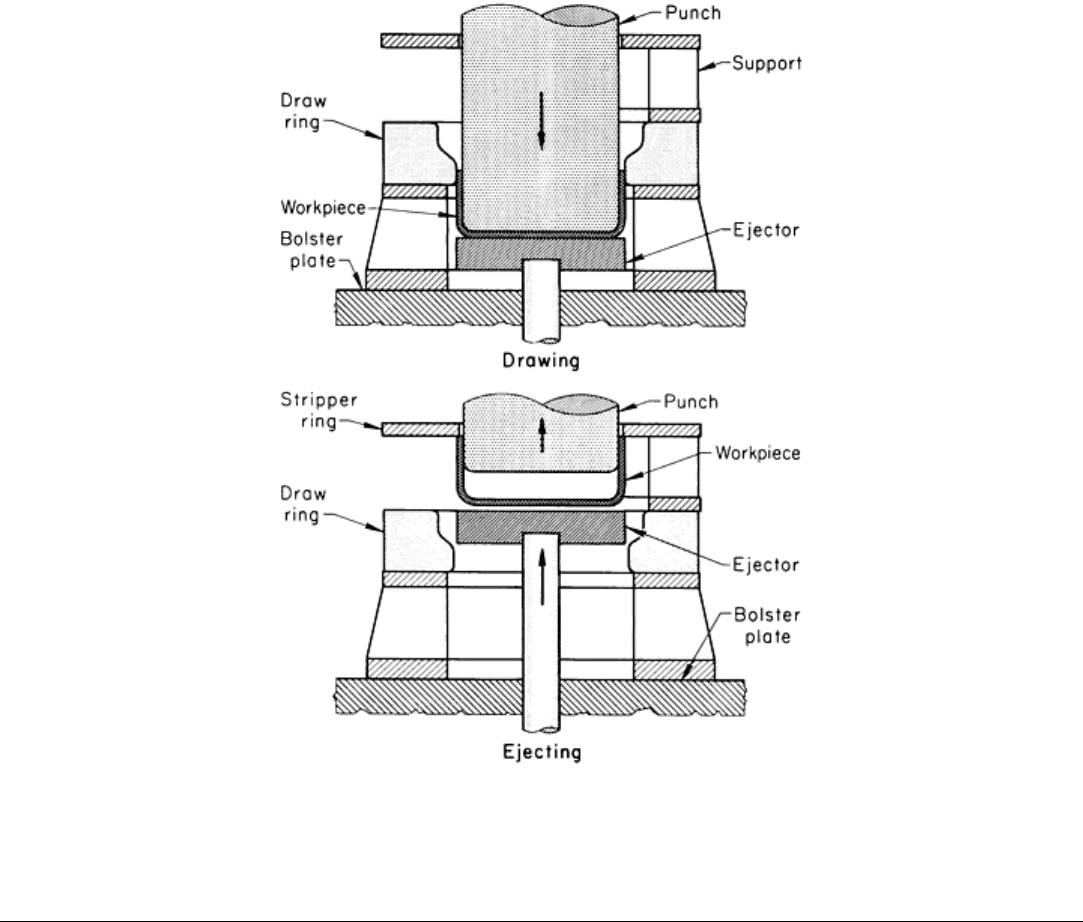
Fig. 23 Setup in which dra
wn workpiece is lifted from the die by an ejector and is stripped off the punch by a
fixed stripper ring.
Deep Drawing
Trimming
Trimming in a lathe (using a cutting tool), roll trimming in a lathe, rotary shearing, die trimming (regular and pinch), and
trimming on special machines are the methods most commonly used for trimming drawn workpieces.
Methods for Specific Shapes. Cylindrical workpieces such as the one shown in Fig. 24(a) can be trimmed by at least
four different methods:
• In a lathe, with a cutting tool, but production cost is high
• By roll trimming in a lathe or in a rotary shear. Production cost is lower than
that for trimming with a
cutting tool, but the finish of a rolled edge is poor and maintenance cost of the rolls is high
•
By pinch trimming in the press at the bottom of the drawing stroke. This involves almost no increase in
production cost, but requires
a more expensive die. This method produces a thinned edge at the trim
line, which may be unacceptable
• In a shimmy die or trimming machine, but production quantities must be high to warrant the investment
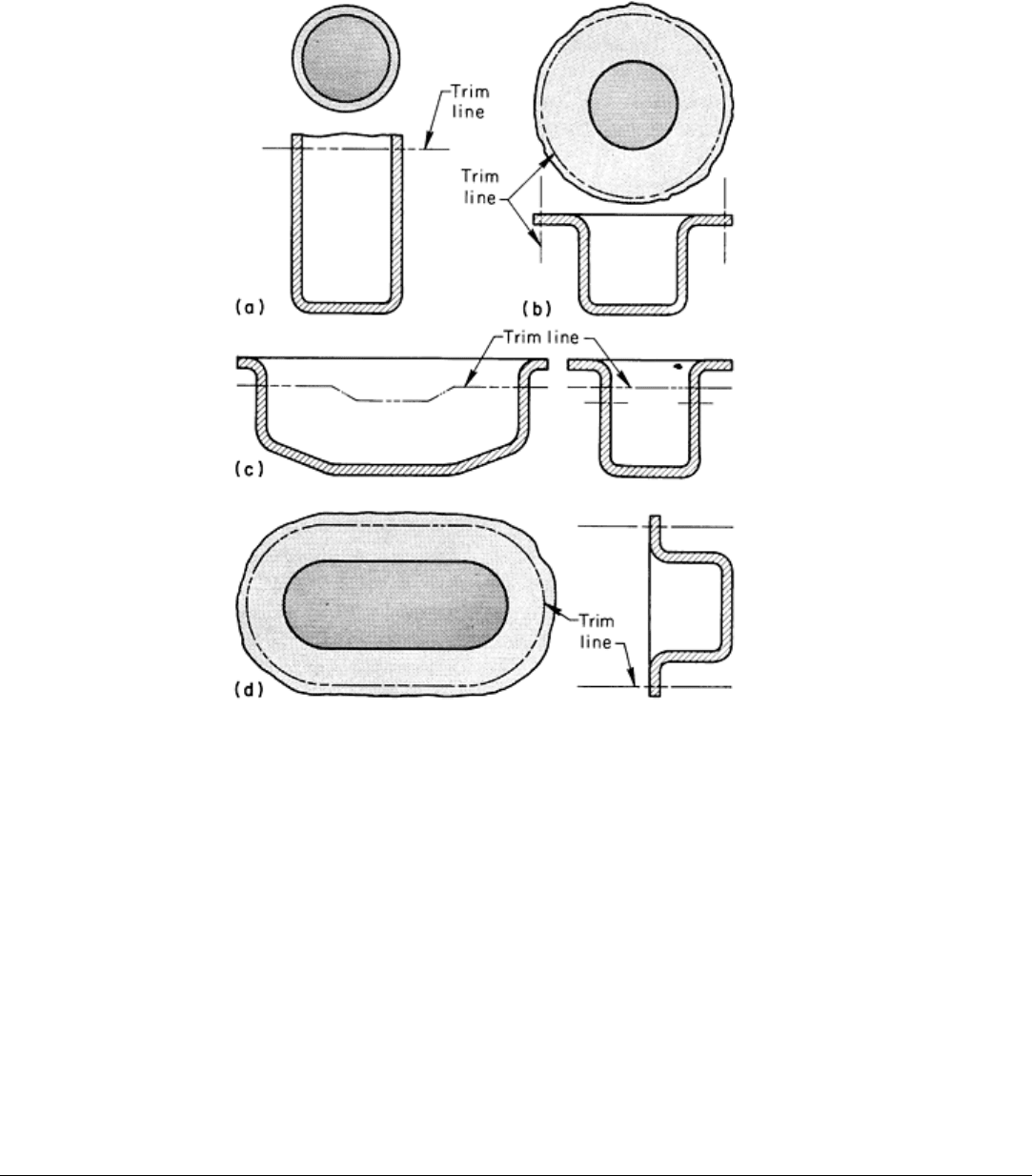
Fig. 24 Typical trim lines on drawn parts. See text for details.
Cylindrical workpieces with flanges, such as the one shown in Fig. 24(b), can also be trimmed in a lathe, although shapes
such as this are ideal for trimming in a die and can be die trimmed for about 5% of the cost of trimming in a lathe. Rotary
shearing can also be used for trimming circular drawn parts with flanges if the dimensional tolerance is 0.76 mm (0.030
in.) or more.
Drawn workpieces with an irregular trim line, as in Fig. 24(c), can be trimmed in a die for low-production requirements,
or with a shimmy die or trimming machine for high-production requirements. The cost of a trimming die is about half that
for a special trimmer (excluding the cost of the original machine). However, the trimming cost per piece with the special
trimmer will be only about half the per-piece cost with multiple dies, and the trimmed edges will be better.
Flanged workpieces such as the one shown in Fig. 24(d) can be trimmed in a die for 5% of the cost of trimming in a
rotary shear. In low production, drawn workpieces of such a shape are frequently trimmed in a nibbler and filed to
conform to a template. This means of trimming costs up to 60 times as much as die trimming.
Deep Drawing
Developed Blanks Versus Final Trimming
The most important factor that influences a choice between using a developed blank or a final trimming operation is
whether or not the shape of the drawn edge is acceptable. A semideveloped blank is sometimes necessary to draw an
acceptable part, and the edge must be trimmed to meet dimensional tolerances.

The next consideration is the cost of blanking versus final trimming. This would include the adaptability of the process to
the available equipment, based on expected production requirements. The principal advantage of a developed blank is that
strip or coiled work metal can be used. The use of strip eliminates the need for shearing the work metal to a rough-blank
shape, as is sometimes required when final trimming is used. The developed-blank approach is usually more economical
than final trimming because a blanking die is frequently less expensive than a final-trimming die.
When using developed blanks, the draw dies are made, and several blanks are drawn to select the optimal developed
shape before the blanking die is made. This causes a delay in placing the draw die into production. However, with proper
planning and scheduling, this should not be a problem.
Another disadvantage of developed blanks occurs when variations in work metal properties and thickness are sufficient to
affect the uniformity of the drawn workpiece. Under these conditions, closer tolerances are obtained by final trimming. It
is possible to develop blank contours accurately enough so that the outline of the drawn part is within tolerance, thus
avoiding a final-trimming operation.
Deep Drawing
Cleaning of Workpieces
In general, the more effective the lubricant, the more difficult it is to remove. Therefore, an overly effective drawing
lubricant should be avoided.
The cleaning method depends on the work metal composition, the lubricant, the degree of cleanliness required, workpiece
shape, and sometimes the length of time between application of lubricant and its removal. Some metals will be attacked
by cleaners that are not harmful to others. For example, strong alkaline cleaners are suitable for cleaning steel and many
other metals, but they are likely to attack aluminum alloys. Detailed information is available in the articles on the surface
engineering of specific metals in Surface Engineering, Volume 5 of the ASM Handbook.
Unpigmented oils and greases can be removed from steel workpieces by several simple shop methods, including alkaline
dipping, emulsion cleaning, and cold solvent dipping. These methods are usually sufficient for in-process cleaning.
However, if the workpieces are to be painted, a more thorough cleaning by emulsion spray or vapor degreasing is
required. For plating, electrolytic cleaning plus etching in acid (immediately prior to plating) is required. These latter
methods usually follow a rough cleaning operation.
Pigmented drawing lubricants and waxes greatly increase cleaning problems. At a minimum, in-process cleaning usually
requires slushing in a hot emulsion or vapor degreasing. If the lubricant is not removed for several days after application,
soaking in a hot alkaline cleaner or an emulsion cleaner may be required. Particularly for complex workpiece shapes,
some hand or power brush scrubbing may be needed. If the workpieces are to be painted or plated, additional cleaning
will be required, as described above. Detailed information on the choice of cleaning method is available in the article
"Classification and Selection of Cleaning Processes" in Surface Engineering, Volume 5 of the ASM Handbook.
Deep Drawing
Dimensional Accuracy
Dimensional accuracy in deep drawing is affected by the variation in work metal thickness, variation in work metal
condition (chiefly hardness), drawing technique (particularly the number of operations), accuracy of the tools, rate of tool
wear, and press condition. Control of dimensions begins with the purchase of sheet to closer-than-commercial thickness
tolerance, which adds substantially to the cost. Close control of sheet hardness also costs more. In-process annealing may
be required to minimize springback or warpage; it will not be needed if tolerances are more liberal. Annealing, handling,
and cleaning operations are costly.
As tolerances become closer, it is often necessary to add more die stations to minimize the amount of drawing in any one
station. Close tolerances may demand restriking operations that would not be necessary for parts with more liberal
tolerances. Additional operations increase tool costs and decrease productivity, thus increasing the cost per piece.
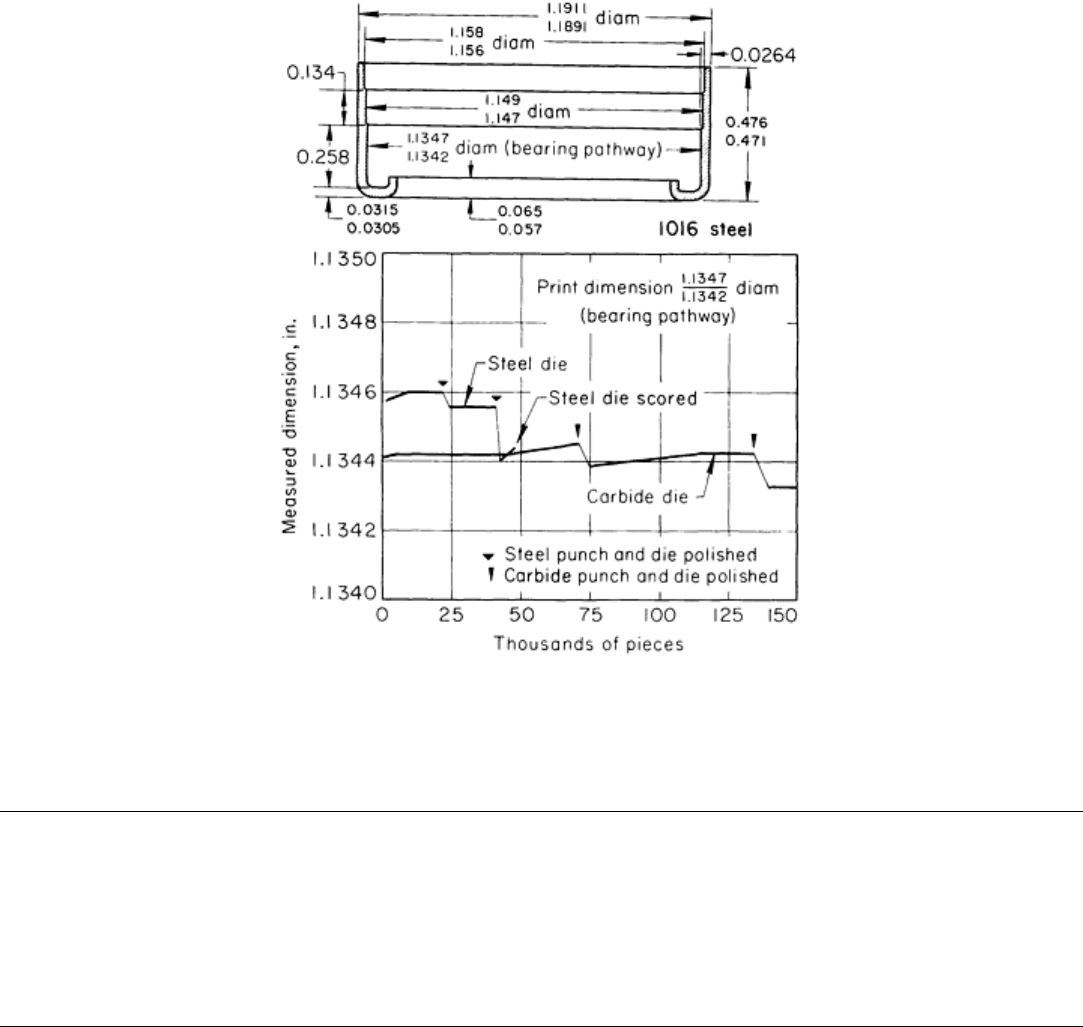
The initial cost of tools increases as tolerances become closer because of greater cost for precision machining and
grinding or more costly tool materials. In addition, tool life before reconditioning and total tool life decrease as tolerances
become closer. Maintenance costs and downtime of presses are also greater.
When required, extremely close tolerances can be maintained on some parts (Fig. 25). In most deep drawing, the accuracy
shown in Fig. 25 is either impossible or impractical. The more usual practice when dimensional accuracy is important is
to check critical dimensions at specified intervals during a production run and to plot the variation. Data from this method
of quality control show the capabilities of the process under shop conditions and the magnitude of drift during a
production run. When results (either initially or during a run) are unacceptable, one or more of the controls discussed at
the beginning of this section can be applied.
Fig. 25 Variation in bearing pathway diameter of a needle bearing cup drawn using high-
speed tool steel and
carbide dies.
Deep Drawing
Safety
Deep drawing, like other press operations, involves potential hazards to operators and other personnel in the work area.
No press, die, or auxiliary equipment can be considered ready for operation until these hazards are eliminated by the
installation of necessary safety devices. Operators should be properly instructed in safe operation of equipment.
Stretch Forming
Introduction
